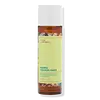What's inside
What's inside
 Key Ingredients
Key Ingredients

 Benefits
Benefits

 Concerns
Concerns

No concerns
 Ingredients Side-by-side
Ingredients Side-by-side

Zea Mays Starch
AbsorbentSodium Cocoyl Isethionate
CleansingSodium Lauroyl Glutamate
Diglycerin
HumectantOryza Sativa Bran
AbrasiveAllantoin
Skin ConditioningMaltodextrin
AbsorbentPapain
Skin ConditioningOryza Sativa Extract
AbsorbentOryza Sativa Bran Extract
Skin ConditioningBromelain
Skin ConditioningCynanchum Atratum Extract
Skin ConditioningSodium Hyaluronate
HumectantTranexamic Acid
AstringentWater
Skin ConditioningButylene Glycol
Humectant1,2-Hexanediol
Skin ConditioningParfum
MaskingZea Mays Starch, Sodium Cocoyl Isethionate, Sodium Lauroyl Glutamate, Diglycerin, Oryza Sativa Bran, Allantoin, Maltodextrin, Papain, Oryza Sativa Extract, Oryza Sativa Bran Extract, Bromelain, Cynanchum Atratum Extract, Sodium Hyaluronate, Tranexamic Acid, Water, Butylene Glycol, 1,2-Hexanediol, Parfum
Dimethylimidazolidinone Rice Starch
AbsorbentSodium Cocoyl Isethionate
CleansingSodium Lauroyl Glutamate
Sodium Lauroyl Aspartate
CleansingOryza Sativa Powder
Diglycerin
HumectantOryza Sativa Lees Extract
Skin ConditioningCalamine
AbsorbentTapioca Starch
Papain
Skin ConditioningMaltodextrin
AbsorbentAllantoin
Skin Conditioning3-O-Ethyl Ascorbic Acid
Skin ConditioningSimmondsia Chinensis Seed Oil
EmollientWater
Skin ConditioningButylene Glycol
HumectantArnica Montana Flower Extract
MaskingAnanas Sativus Fruit Extract
Skin ConditioningAlchemilla Vulgaris Extract
AstringentActinidia Chinensis Fruit Extract
EmollientDimethylimidazolidinone Rice Starch, Sodium Cocoyl Isethionate, Sodium Lauroyl Glutamate, Sodium Lauroyl Aspartate, Oryza Sativa Powder, Diglycerin, Oryza Sativa Lees Extract, Calamine, Tapioca Starch, Papain, Maltodextrin, Allantoin, 3-O-Ethyl Ascorbic Acid, Simmondsia Chinensis Seed Oil, Water, Butylene Glycol, Arnica Montana Flower Extract, Ananas Sativus Fruit Extract, Alchemilla Vulgaris Extract, Actinidia Chinensis Fruit Extract
 Reviews
Reviews

Ingredients Explained
These ingredients are found in both products.
Ingredients higher up in an ingredient list are typically present in a larger amount.
Allantoin is a soothing ingredient known for its protective and moisturizingg properties. Because of this, it is often added to products with strong active ingredients.
Studies show higher concentrations of this ingredient can promote wound healing.
Though it can be derived from the comfrey plant, allantoin is produced synthetically for cosmetic products to ensure purity.
Learn more about AllantoinButylene Glycol (or BG) is used within cosmetic products for a few different reasons:
Overall, Butylene Glycol is a safe and well-rounded ingredient that works well with other ingredients.
Though this ingredient works well with most skin types, some people with sensitive skin may experience a reaction such as allergic rashes, closed comedones, or itchiness.
Learn more about Butylene GlycolDiglycerin is a humectant. It is derived from glycerin, which is naturally found in your skin.
As a humectant, it helps draw moisture to the skin from the air.
Maltodextrin is a polysaccharide. It is derived from starch such as rice, corn, wheat, or potato starch.
In food, Maltodextrin is used to improve the texture and thicken a product. Due to its structure, it can help create a gel texture. As an emulsion stabilizer, it helps keep the ingredients in a product together.
As a polysaccharide, Maltodextrin has moisturizing properties. Polysaccharides are a type of carbohydrate. The top layer of skin uses polysaccharides to retain water, keeping the skin hydrated.
Maltodextrin is water soluble and has a sweet taste.
Learn more about MaltodextrinPapain is an enzyme found naturally in the papaya plant's leaves, fruit, and roots. It has antimicrobial, soothing, and wound healing properties.
Glycine and Vitamin A are naturally found in papain.
While papain is often touted as skin-lightening, further studies are needed to prove this. However, papain has been shown to help soothe acne-inflammation.
Papain belongs to a class of enzymes called proteolytic enzymes. These enzymes break down peptides and amino acids.
Some studies found papain to be a potential skin sensitizer and allergen. Those with latex allergies might also be allergic to papaya.
Learn more about PapainSodium cocoyl isethionate is a natural ingredient from coconut oil. It is an ultra gentle cleanser that gives a nice foam without drying the skin or impacting the skin barrier.
The amount of foam created depends on the amount of sodium cocoyl isethionate used in the product.
This ingredient also helps improve the spreadability of a product.
Learn more about Sodium Cocoyl IsethionateSodium Lauroyl Glutamate is the sodium salt from the lauric acid of glutamic acid.
It is a surfactant and helps cleanse the skin. Surfactants gather oil, dirt, and other pollutants from your skin so they may be washed away easily.
Water. It's the most common cosmetic ingredient of all. You'll usually see it at the top of ingredient lists, meaning that it makes up the largest part of the product.
So why is it so popular? Water most often acts as a solvent - this means that it helps dissolve other ingredients into the formulation.
You'll also recognize water as that liquid we all need to stay alive. If you see this, drink a glass of water. Stay hydrated!
Learn more about Water